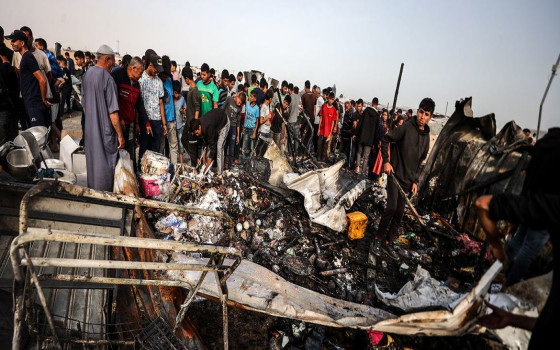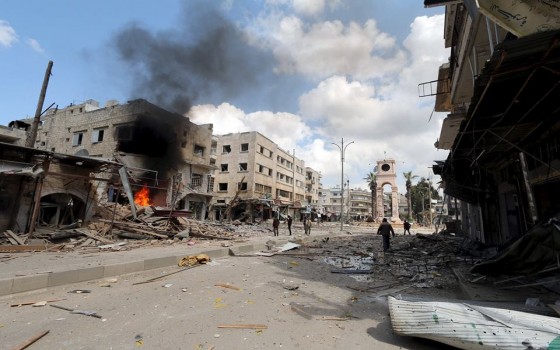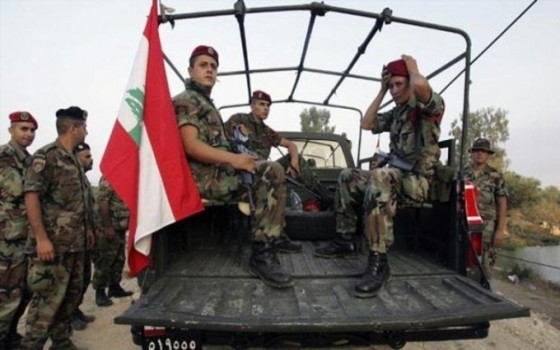
Report: Hamas faces significant pressure, including the Turkish-Qatari axis's prioritization of self-interest, Arab and Islamic support for the Trump plan, Cairo's rejection of displacement plans, and Gaza residents facing the choice between death or departure.

- Europe and Arabs
- Thursday , 2 October 2025 6:37 AM GMT
Brussels: Europe and the Arabs
One of the most important features of the proposal to end the war in Gaza presented by US President Donald Trump is that it differs from previous plans and proposals. The entire world is now awaiting Hamas's response after the proposal received the support of Israeli Prime Minister Benjamin Netanyahu. According to a report published by the European News Network in Brussels, "Euronews," he added, "The twenty points proposed by Trump—after several meetings with former British Prime Minister Tony Blair and other figures—although they have been repeated in more than one previous draft and have led to extensive negotiations in Arab capitals such as Doha and Cairo, come this time with a different flavor, one that the armed movement does not have the luxury of maneuvering or buying time against.
On the one hand, Trump is giving Hamas a maximum of three or four days to accept the plan and step down. At the same time, he is granting Netanyahu, who now occupies more than 75% of the Gaza Strip, full authorization to act as he pleases.
On the other hand, the proposal has received full Arab and Islamic endorsement, pulling the plug on the Palestinian faction and pushing toward concluding the agreement, ending this cycle that seemed destined to swallow up more than one player and drag into costly conflicts beyond Gaza's borders.
Hamas in a Tight Circle
Previously, it objected Hamas has agreed to several items in the current agreement, including disarmament and the absence of a clear timetable for Israeli withdrawal, as well as granting Netanyahu the right to return to fighting if the agreement is breached. However, it had numerous bargaining chips: the hostages it holds, popular support in Gaza, and the patronage of countries such as Qatar, Turkey, and Iran. However, today the movement is trapped in a tight circle.
Famine and Siege
After two years of war, the Gaza Strip has become a hell for its residents, as described by the Commissioner of the United Nations Relief and Works Agency for Palestine Refugees (UNRWA), Philippe Lazzarini. This is supported by dozens of international reports confirming that 90% of the buildings have been destroyed, and that the famine declared by the United Nations in the northern Gaza Strip last August is spreading to the center and south, where hundreds of thousands of displaced people are crowded together amid an Israeli ground operation to occupy Gaza City.
Faceted by a stifling economic blockade due to the closure of the crossings, and amid a complete absence of all the necessities of life, the infrastructure and health system have collapsed due to the prolonged bombardment. Hospitals and relief workers, Gazans have no choice but to leave or die.
In this context, Hamas's popular support and backing are waning, driven by the desire to survive and the urgent need to end the war. Armed groups rebelling against Hamas rule, such as the Abu al-Shabab militia, have begun to emerge in the Strip, reducing the movement's room for maneuver and paving the way for the emergence of a new domestic landscape.
On the political front as well, 16 prominent local figures in the Gaza Strip, led by the head of the Palestinian Chamber of Commerce, Iyad Abu Ramadan, appealed to President Donald Trump to pressure Israel to stop the fighting and end the war.
Withdrawing International Cover
This time, the American proposal has received Arab and Islamic support, especially in light of the regional landscape, which is either hostile or changing.
The Iranian axis and the groups orbiting it (the Houthis and Hezbollah) are under significant military and economic pressure, whether through the reimposition of sanctions on the Islamic Republic after the activation of the "trigger mechanism," or the possibility of reopening a direct front between Tehran and Tel Aviv, in addition to the fundamental changes that This axis emerged after the decline of Hezbollah's power, the assassination of its Secretary-General Hassan Nasrallah, the fall of the Assad regime in Syria, and the rulers of Damascus and Beirut began disarming Palestinian factions.
The anti-Muslim Brotherhood axis, which includes Saudi Arabia, the UAE, Egypt, Jordan, and others, is known for its opposition to Hamas.
The Turkish-Qatari axis, which supports the Muslim Brotherhood, appears more pragmatic and prioritizes its own interests.
In this context, observers believe that Washington and Israel worked to create a platform for these axes to push them to accept the proposal. Previously, Trump pressured Jordan and Egypt through a proposal to displace the residents of Gaza and resettle them in these two countries, paving the way for a project that would transform the Strip, with its coastal front, into the "Riviera of the Middle East." Cairo rejected this proposal.
However, the uproar caused by the project to transform Gaza into a tourist resort subsided after Trump's subsequent tour of the Gulf states and the funds and gifts he received from Qatari leaders, most notably the presidential plane he received. Emir Tamim bin Hamad.
Doha, which hosts the Al Udeid Air Base, the largest US military base in the Middle East, has hundreds of millions of dollars in investments in America in general and with the Trump Organization in particular, including the rescue of the 666 building on New York's Fifth Avenue, owned by Jared Kushner, the president's son-in-law.
However, the surprise Israeli strike targeting Hamas leaders in Doha sent a clear message: Qatar's interests are threatened if it continues to sponsor the armed Palestinian movement. Despite Netanyahu's subsequent apology or regret to the Emir of Qatar, regardless of the wording of the transmitter and narrator, he showed no opposition to the position of his Defense Minister, Israel Katz, who threatened to strike Hamas leaders in any capital they were in.
Qatar's International Gain
The Times of Israel believes that Doha is currently experiencing a pivotal international moment following the Israeli strike. It has succeeded in transforming its complex role—as a financier of Hamas, an international mediator, and an ally of the United States—into its greatest political and diplomatic gain from the war in Gaza, giving it significant influence over the future of Gaza and Israeli policy in the region as a whole.
As for Turkey, its president, Recep Tayyip Erdoğan, is pressuring Hamas to sign the agreement. Although Ankara is considered one of the most vocal critics of the Israeli war, describing it as "genocide," it cannot ignore other interests, such as its investments in Syria, a strategic country in the region, which seeks to conclude a security agreement with Israel and improve its relationship with the White House.
Previously, Trump announced that Turkey was considering purchasing F-16 and F-35 fighter jets and the Patriot system from the United States, and that he would speak about this matter with Erdoğan, "a strong and great president," as the White House president put it on the day he announced the Gaza proposal. Erdogan recently visited the White House, his first visit in six years, and observers believe this moment represents an opportunity for Ankara to reset its relationship with Washington, given regional conflicts and intensifying competition with Russia and China.












No Comments Found